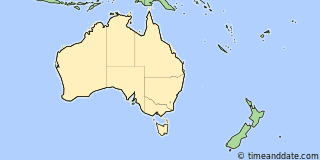2025年4月6日 (日), 2時00分
| End DST: | 1944年3月26日日曜日 — 1 hour backward |
|---|
3月26日 (日)
Back 1 hour
1944年3月26日 (日) - Daylight Saving Time Ended
When local daylight time was about to reach
1944年3月26日日曜日, 2時00分00秒 clocks were turned backward 1 hour to
1944年3月26日日曜日, 1時00分00秒 local standard time instead.
Sunrise and sunset were about 1 hour earlier on 1944年3月26日 (日) than the day before. There was more light in the morning and less light in the evening.
Also called Fall Back and Winter Time.
More info:
Australia & New Zealand Start DST
When Does DST Start and End on Lord Howe Island?
During Daylight Saving Time (DST) the clocks on Lord Howe Island are set forward 30 minutes, not the normal whole hour, from UTC+10:30 to UTC+11. DST starts on the first Sunday of October and ends the first Sunday of April, the same as mainland Australia.
Daylight Saving Time in Other Years
DST changes do not necessarily occur on the same date every year.
| Year | DST Start (Clock Forward) | DST End (Clock Backward) |
|---|---|---|
| 1925 — 1941 | DST not observed | |
| * 1942 | 1月1日木曜日, 2時00分 | 3月29日日曜日, 2時00分 |
| 1943 | 10月3日日曜日, 2時00分 | 3月28日日曜日, 2時00分 |
| 1944 | No DST Start | 3月26日日曜日, 2時00分 |
| 1945 — 1949 | DST not observed | |
| All times are local for Lord Howe Island. * All or part of this period was on double DST. | ||
History of DST on Lord Howe Island
Lord Howe Island started using DST in 1971 at the same time as New South Wales. The clock was moved forward by a full hour according to the Standard Time Act 1971. In 1985, a governor’s order stated that DST on Lord Howe Island would be 30 minutes ahead of Australian Eastern Standard Time (AEST), putting it on the same local time as NSW during the DST period.
DST operated nationally in Australia during World War I and for three periods during World War II.
